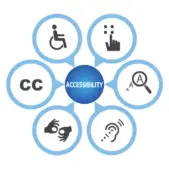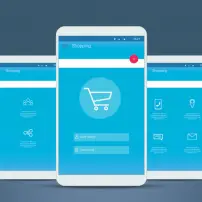It’s hard to overstate the value of an intuitive and engaging user experience (UX) in today’s digital culture. Yet selling the UX design process to management can often feel like an uphill battle, especially when other business priorities loom large, and resources are limited.
UX designers and professionals know user-centric design isn’t just about creating a sleek interface. You must also craft experiences that drive user satisfaction, enhance brand loyalty, and contribute to the company’s bottom line.
But securing management buy-in for UX initiatives takes more than a firm belief in the power of good design. It demands a persuasive strategy that aligns with the company’s goals and demonstrates clear, measurable outcomes.
In this guide, we navigate the complexities of gaining management support for your UX design process. From bridging language barriers to demystifying the ROI of UX, we provide actionable insights to turn skeptical executives into staunch advocates of user-centric design.
Why It’s Difficult to Get Management Buy-In for Your Design Process
Gaining management buy-in for UX design is challenging for several reasons, such as communication barriers, an unclear return on investment (ROI), and cost concerns. Executives often prioritize tangibles, and UX benefits can seem intangible compared to projects that yield immediate revenue. To break through, you need a compelling case that speaks their language and demonstrates definitive value.
Language Barriers
Clear communication is the lifeblood of any successful initiative. Yet when it comes to UX design, a chasm often exists between the language of designers and that of management.
Designers speak in terms of user flows and interaction models. Executives, on the other hand, think in terms of revenue, market share, and quarterly goals. This disconnect can lead to misunderstandings and an undervaluation of the UX design process.

To bridge this gap, designers must learn to translate their work into the language of business impact. Talk less about color palettes and more about conversion rates; less about typography, and more about time saved. Frame design choices in terms of user retention and satisfaction metrics, both of which have direct implications on the company’s financial health.
Uncertain ROI
One of the biggest hurdles in securing management buy-in for UX design is the perceived uncertainty of ROI. Leaders make decisions that impact both performance and profits. While UX practitioners understand that a good design process can lead to such outcomes, quantifying its direct impact can be challenging.
To overcome this obstacle, UX advocates must present a narrative supported by data:
- Showcase industry benchmarks.
- Compile case studies where enhanced UX led to better business results.
- Conduct customer satisfaction surveys pre- and post-UX improvements.
For new initiatives, propose a pilot project or A/B testing to provide a controlled environment. You can then demonstrate the positive effects of UX on key performance indicators (KPIs).
Put a number on the expected savings from reduced error rates, increased customer retention, and improved conversion. This can provide a compelling argument for UX as a sound financial decision, rather than a costly gamble. Also, complement quantitative data with qualitative research to present a well-rounded picture of UX’s impact, backed by both numbers and narratives.
Expense Concerns
There’s a notion that the UX design process is prohibitively expensive. The initial investment in user research, prototyping, and testing can seem daunting, especially when the returns aren’t immediately clear.
To counteract this perception, emphasize the cost of not investing in UX. This may include lost customers, inefficient services, and the consequent need for more costly fixes down the line.
In addition, illustrate the potential for UX to streamline operations and reduce long-term expenses. For example, a well-designed interface can decrease the need for customer support, saving the company money on personnel and training.
Discussing the scalability of UX efforts can also alleviate concerns. Not every UX initiative requires a complete overhaul; incremental changes based on user feedback can result in significant improvements. What’s more, presenting different tiers of investment can help management choose a level of engagement that matches its budget constraints but still moves the needle on UX.
How to Communicate Your UX Design Process to Overcome Pushback
User expectations are higher than ever, and a UX design can make or break a product’s success. But conveying this critical message to management poses its own set of challenges. As a UX leader, your mission extends beyond design. It involves championing the user’s voice and turning it into a compelling narrative that resonates with the C-suite level.
Gather Data and Create a Business Case
Gaining management buy-in lies in the ability to present a business case that marries UX design with tangible business benefits. It starts with gathering data—user analytics, market research, and competitive analysis—to build a narrative grounded in facts rather than assumptions.
Pinpoint the real problem the business is trying to solve and present a clear solution. In constructing this case, every UX proposal should clearly map out how it serves the broader business strategy.

Videos of user sessions that showcase their frustrations and confusion can be an emotional, powerful, and convincing testament to the value of strong UX design. Also, use competitors as case studies to demonstrate the consequences of effective or poor UX practices. This taps into the drive to outperform in the market.
With well-researched insights and predictive analytics, a UX leader can outline a compelling vision for how design changes lead to measurable growth. This underlines the UX team’s role not just as designers but as strategic partners in the company’s success.
Speak Their Language
To convert UX proposals into funded projects, you must translate design-centric language into business-speak. Tactfully using the language of business can position UX as a key driver of innovation and profitability.
When discussing research findings or potential UX enhancements, frame them in context with KPIs and ROI estimations. For instance, you might explain how
- Design changes can reduce time-to-market
- Usability improvements can lower customer acquisition costs
- A refreshed user interface can open up new market opportunities
Show you understand and can address management’s priorities and concerns. In doing so, you’ll foster a productive conversation that places UX at the heart of business decision-making.
Visualize Your Design Process
A well-visualized design process can be a powerful way to convey complex UX concepts to management. Visual aids such as flowcharts, wireframes, and prototypes can demystify the design process and illustrate how it aligns with business objectives.
The goal is to break the process down into clear, understandable stages. Then, stakeholders can see the thought and effort that goes into creating a seamless user experience.
In your presentations, use visual storytelling to walk management through the user’s journey. Show before-and-after scenarios that highlight the impact of proposed changes. Use graphs and infographics to represent user feedback and satisfaction levels. This simplifies and clarifies how UX initiatives contribute to positive user engagement and the bottom line.
Show Potential ROI Calculations
Perhaps the most persuasive way to garner management support is to demonstrate the potential returns from UX initiatives. When you present ROI calculations, ensure they’re clear, realistic, and firmly rooted in data. Highlight case studies where UX investments have led to substantial returns for well-known businesses. Show how similar results can be achieved within your organization.
Develop and test business case hypotheses. For example, use data to show how streamlining the purchase and checkout process can accelerate customer decision-making, minimize obstacles, and decrease churn. Identify what needs to be in place for this to happen. Then, quantify the potential sales increase if these improvements are implemented.

Discuss not only immediate financial gains but also long-term benefits such as brand strengthening and customer loyalty. Use KPIs to track project goals, so you can then present clear and realistic ROI calculations associated with UX design initiatives. For instance:
- To gauge user satisfaction and loyalty, monitor Net Promoter Score (NPS), Customer Satisfaction Score (CSAT), retention rate, and churn rate.
- For user engagement and conversion, look at time spent on the site, page views, bounce rates, click-through rate, and conversion rate.
- To measure reductions in user frustration and errors, consider error rate, task completion rate, abandonment rate, and the number of support requests.
- To assess cuts in development and maintenance costs, track development time, amount of rework, number of bug fixes, and levels of technical debt.
Remember to address potential risks and how the proposed UX strategy mitigates them. By illustrating a comprehensive, balanced view of potential returns, you align UX’s potential with the company’s risk management and financial strategies. This makes a powerful case for the necessary investment in user experience design.
Find Advocates of Your Design Process
Securing management buy-in for UX design isn’t just about presenting facts and figures; you must also rally support from within. Find advocates of your UX process among key stakeholders to increase your chances of success. These allies can be instrumental in championing the value of UX across different departments, breaking down silos that might otherwise impede the acceptance of design initiatives.
Look for advocates in roles that intersect with UX, such as product management, development, or customer service. These individuals often understand firsthand the impact that design has on their work and can attest to its benefits.
Involve these advocates early in the design process. Their insights can help tailor the UX conversation in a way that addresses specific organizational pain points and opportunities. They can also provide valuable feedback on how to refine proposals to better align with corporate objectives.
Be sure to empower these champions with the right tools: presentation materials, data reports, and user testimonials. This will enable them to make a strong case as to why investing in UX is a win for the entire organization.
Securing Buy-In: A Strategic Collaboration for UX Success
The journey to secure management buy-in for your UX design process is a multifaceted endeavor. It hinges on your ability to articulate the tangible business benefits, present clear ROI calculations, and foster a coalition of support inside the organization. With well-researched data and a clear design process, you can build a compelling and persuasive case.
UpTop helps businesses expand their reach and leverage market opportunities through the creation of exceptional digital experiences. Our UX strategy, product design, and software development teams work closely with you to guide early design choices and use strategic research to confirm their validity.
We excel in aligning UX with business goals. Our expertise bridges user needs with management priorities to deliver sound, strategic, and robust digital solutions. Connect with us to build a user-centric future where your investments lead to measurable success.


